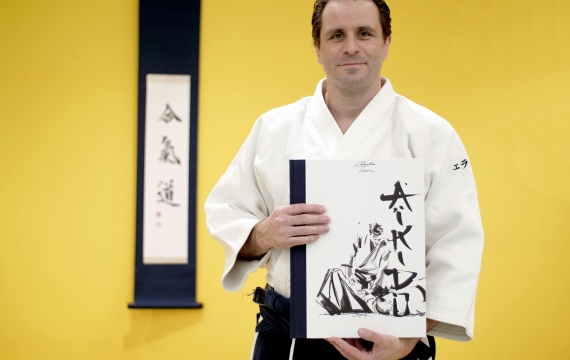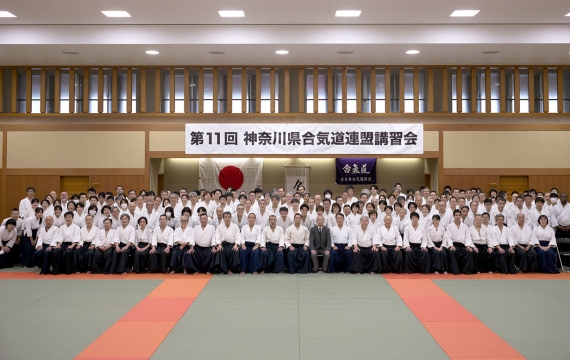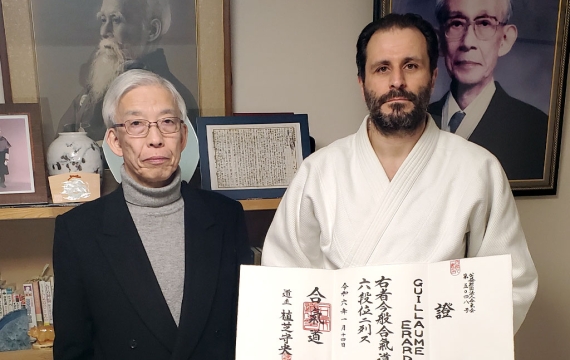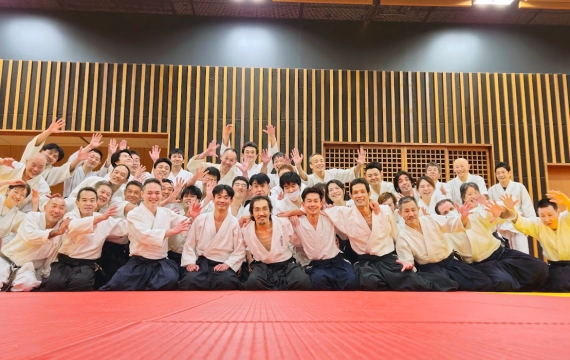NEWS

Guillaume Erard Contributes to Christian Tissier Shihan’s New Book

11th Kanagawa Prefecture Aikido Federation Seminar

Guillaume Erard Sensei Promoted to 6th Dan During the Kagamibiraki 2024

This page will serve you as a reminder to practice the basics of kenjutsu (剣術).
Many of O Sensei's students have added a patchwork of weapon techniques in a more or less codified way to their own empty-handed teaching, and today we see many teachers introducing elements of iaido, jodo, and even other classical schools in their teaching. Although not essential, weapons practice can be very beneficial for progression, but the body mechanics governing different weapon systems vary widely. The main thing is therefore less which weapon system one uses than whether the mechanics that govern the movements are in phase with the way in which one moves with bare hands.
Note that the emphasis on the sword is quite representative of the educational nature of budo since in reality, the sword was primarily a symbol of rank and has historically been used relatively little on the battlefield. In this sense, the weapons of the samurai (武器, buki) should be seen as mere utensils (器, ki). If accomplished, a warrior may well use any other utensil than a sword or spear, or even a pair of chopsticks. The way he uses his body will dictate how he wields the buki, not the other way around.
Hold the weapon by grabbing from above, not from the side. Leave some space between the two hands when gripping a weapon and taking the so-called seigan guard. I personally leave about a fist length between the two hands.
During strikes, it is the palm of the hand that stops the sword, not the thumb. And most importantly, when the sword is not in front of you, but in a mobile position, it is imperative to keep the fingers together and especially the palm of the hand in permanent contact with the hilt. Always keep your thumb in line with your forearm.
Focus on how you use your fingers when doing this strike. When the ken goes up, the strength is in the little finger of the left hand. When you strike, it is the index finger that takes precedence over the little finger in order to transfer the force from the hips to the point of the ken through the index finger
When you put the force in the little finger, you should rest your body weight on external part of the feet. Conversely, when you strike and the force goes through the index finger, you should switch to the internal supports of the feet.
When you apply the grip as you raise, you should stand of the part of the foot used for reception. When you use the grip of precision as you strike, you should use the part of the foot for propulsion.
For all questions and inquiries, please email: [email protected]
Classes are taught in English, Japanese et and French